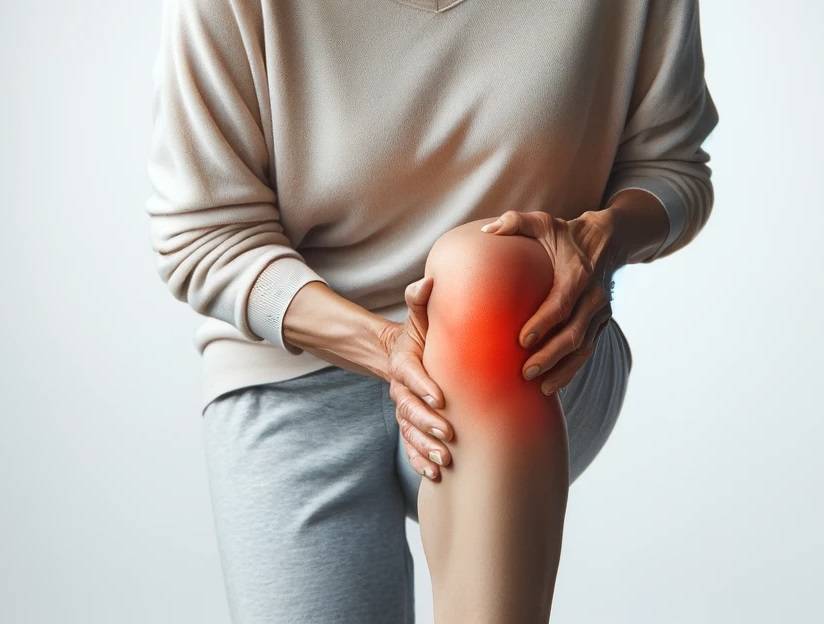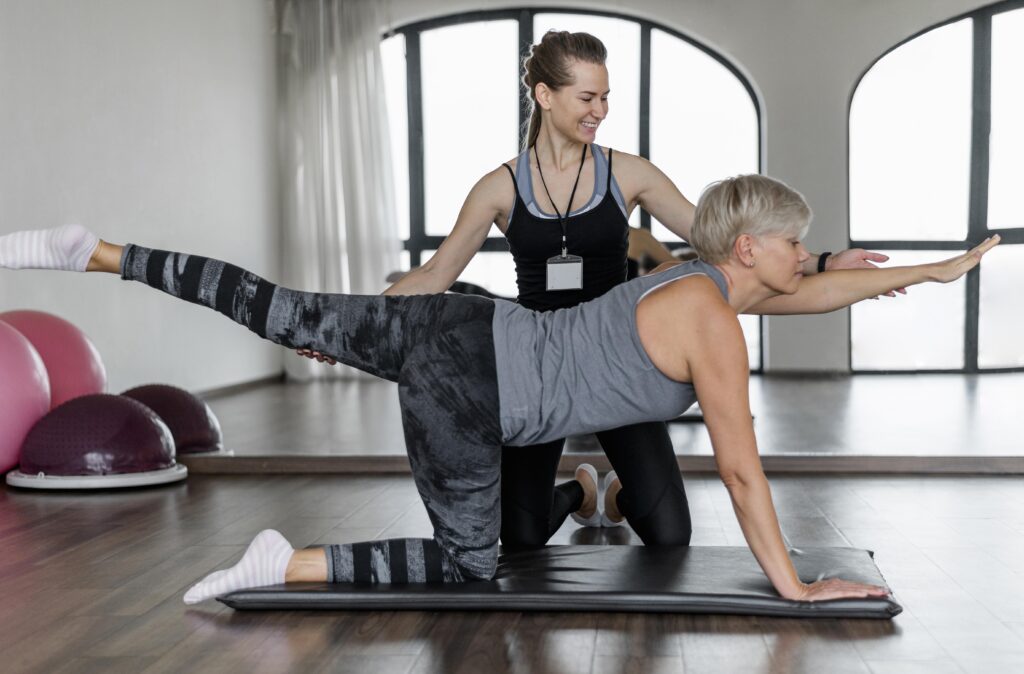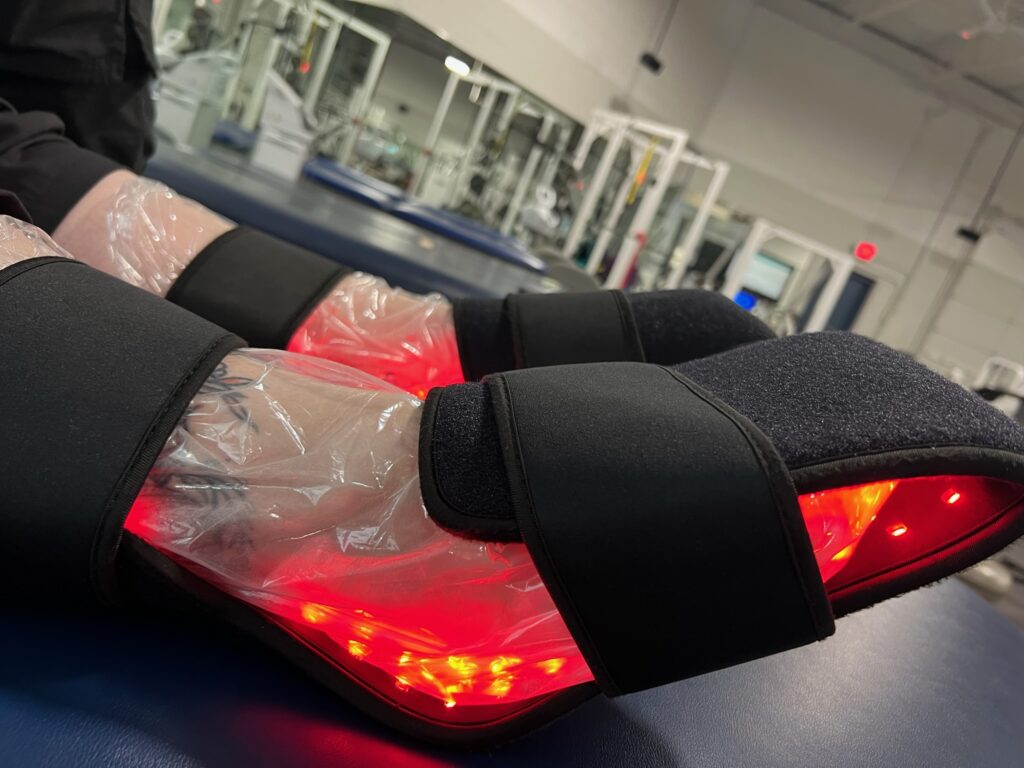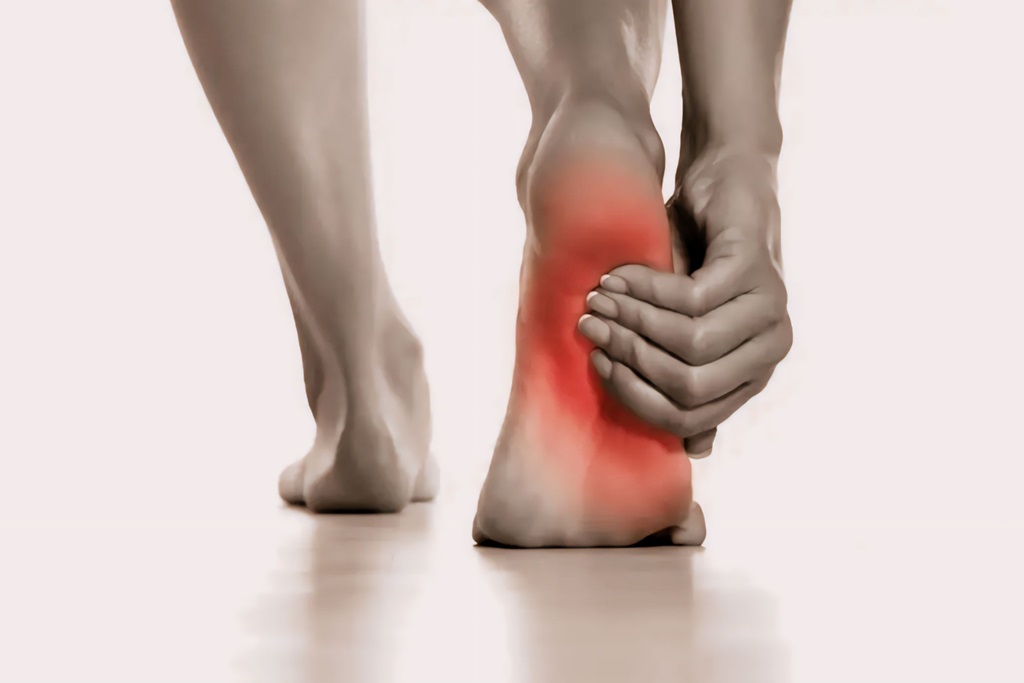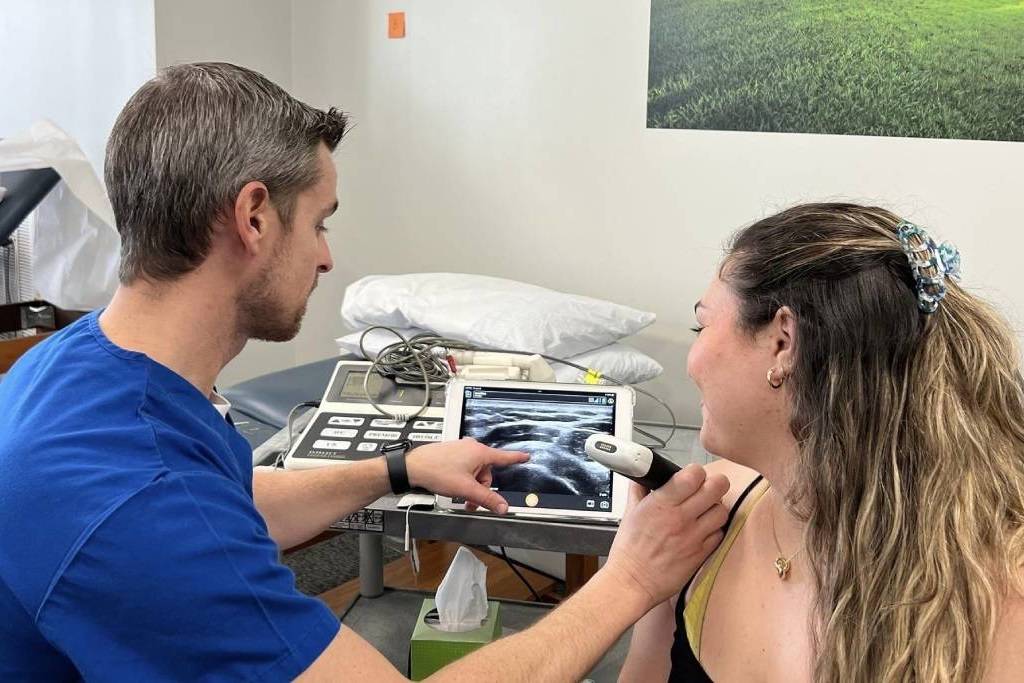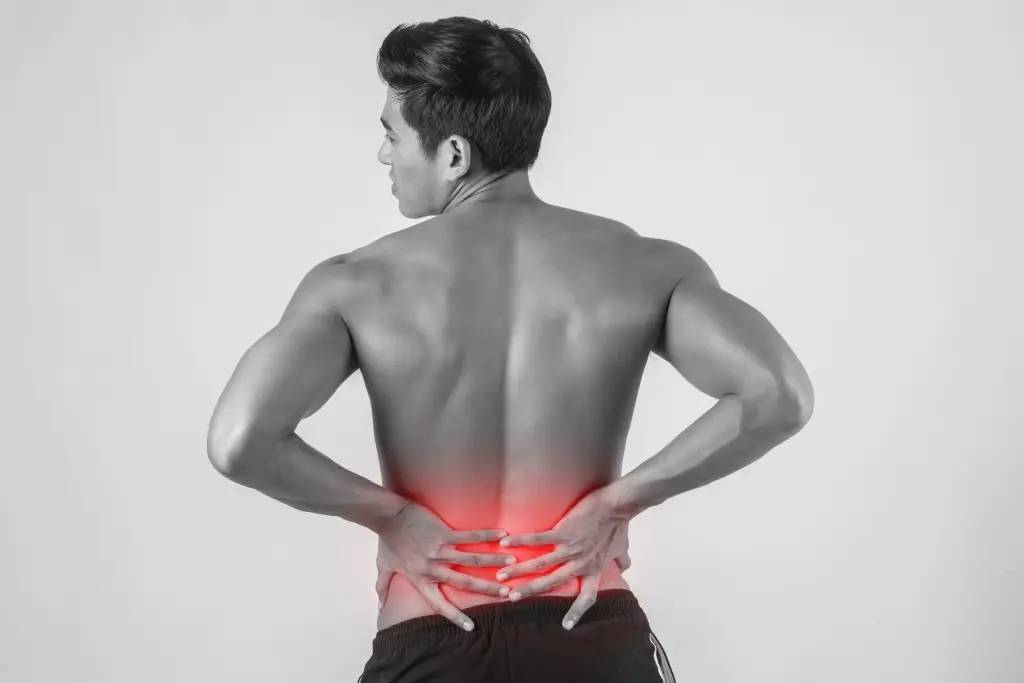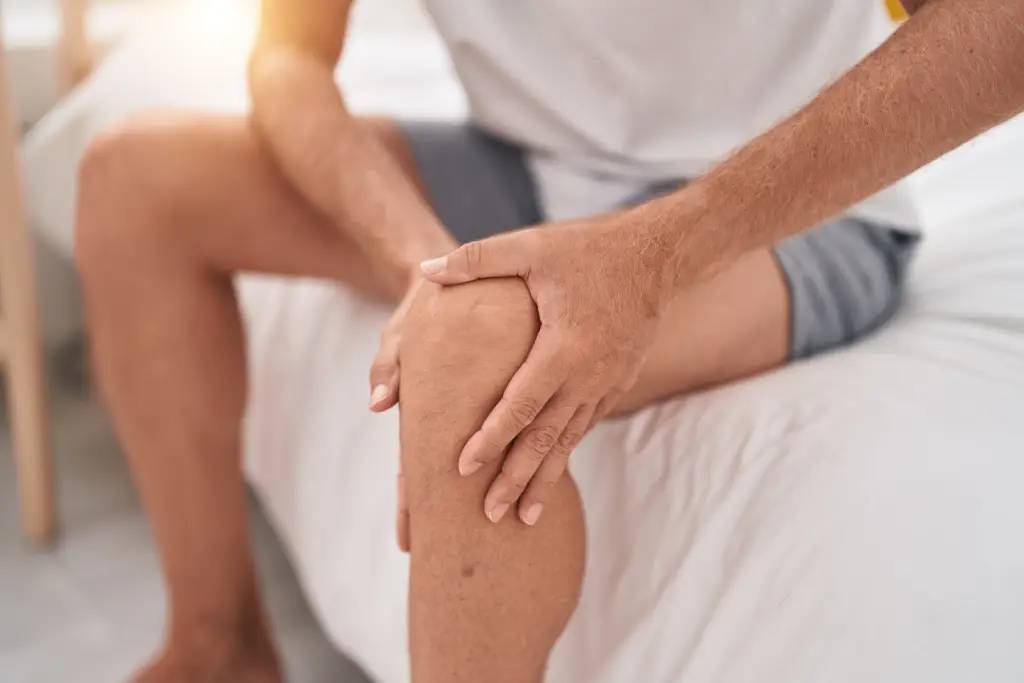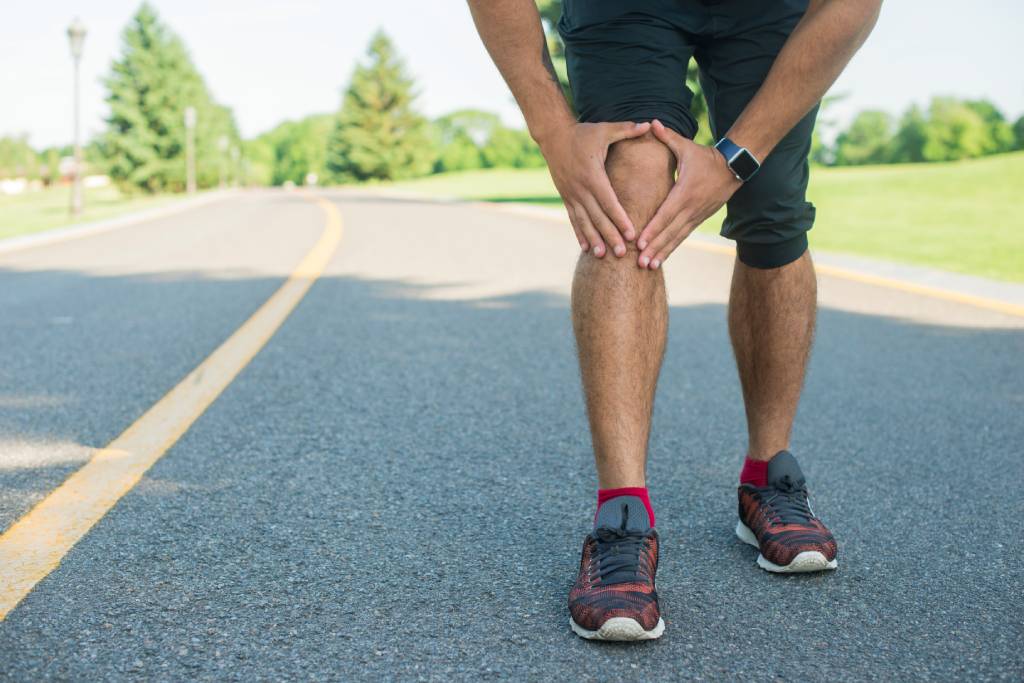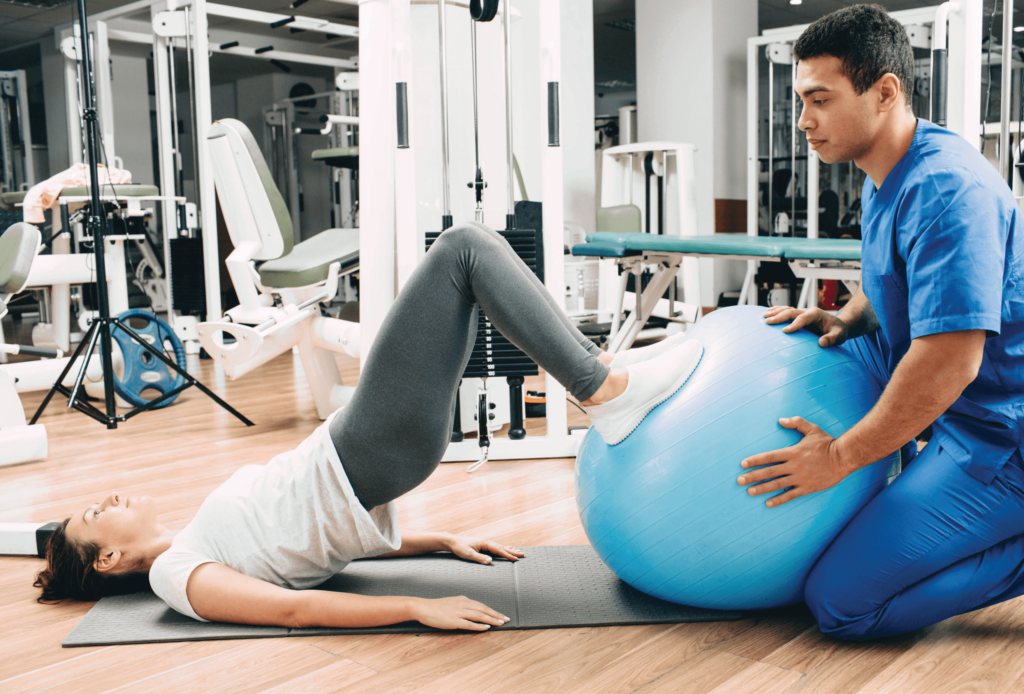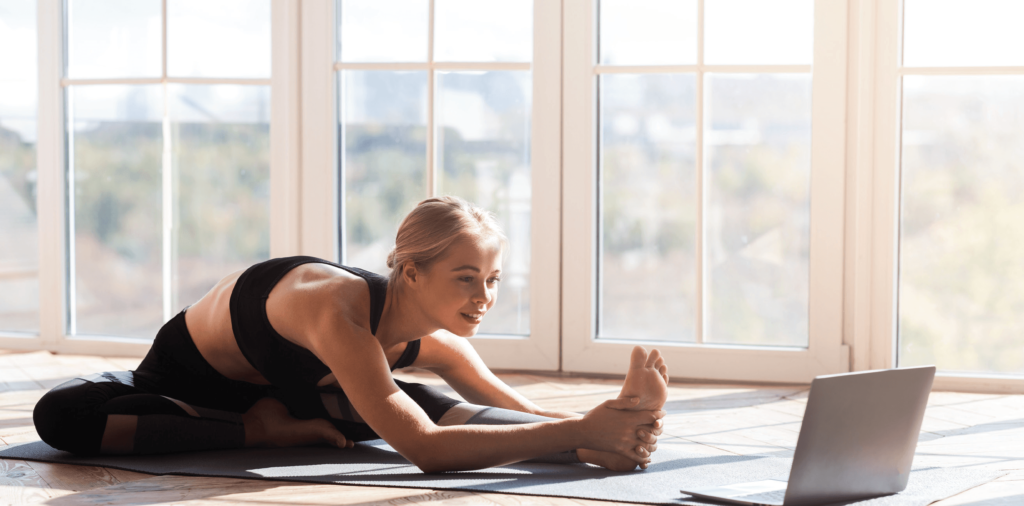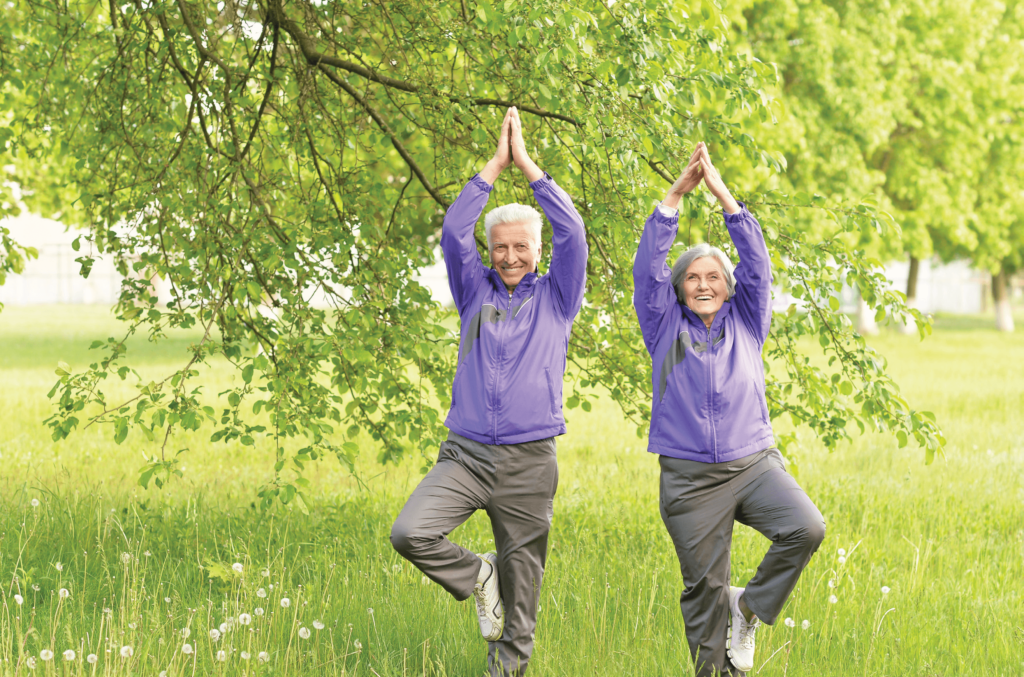6 Easy At-Home Knee Replacement Exercises
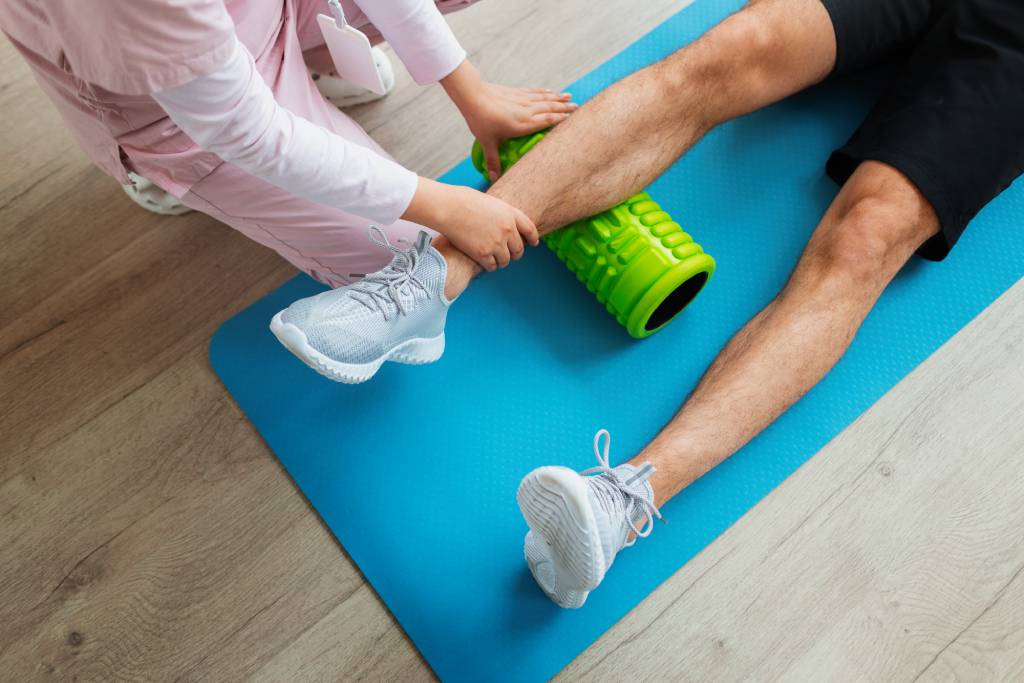
Recovering from a total knee replacement takes time, effort, and most of all, patience. While supervised exercises at physical therapy are crucial for refining your form under professional guidance, it’s essential to recognize that the journey to recovery extends beyond these sessions.
At-home Knee Replacement Exercises play a pivotal role in enhancing your rehabilitation process, offering you the opportunity to continue strengthening your knee in the comfort of your own space. By incorporating a routine of at-home exercises, you not only contribute to a holistic recovery but also empower yourself with the tools to progress at your own pace. This comprehensive approach, combining professional guidance with personalized at-home routines, forms the cornerstone of a successful and efficient recovery from total knee replacement surgery.
Here, we present a selection of important, easy-to-do exercises to seamlessly integrate into your at-home routine, supporting your ongoing journey toward a stronger and more resilient knee.
Ball Wall Squats Exercise
Strengthening Quads and Glutes for Optimal Recovery
Speed up your knee replacement recovery with Ball Wall Squats—a powerful exercise designed to strengthen your quads and glutes. Place a medicine ball between your back and the wall and another smaller ball between your knees for added stability.
Doing wall squats with a ball replicates movements like standing up from a chair or getting in and out of your car, making daily activities more manageable.
How to Perform Ball Wall Squats:
- Find a Sturdy Wall: Identify a wall with enough space for you to comfortably lean against.
- Position the Medicine Ball: Place a medicine ball between your lower back and the wall, ensuring it’s positioned securely.
- Place a Smaller Ball Between Knees: Introduce a smaller ball between your knees, enhancing stability and engagement.
- Maintain Proper Alignment: Stand with your feet shoulder-width apart, ensuring your back is in contact with the medicine ball and the smaller ball is secured between your knees.
- Initiate the Squat: Slowly lower your body into a squatting position, keeping your back against the medicine ball and knees aligned with the smaller ball.
- Controlled Ascent: Gradually return to a standing position, emphasizing controlled movement throughout.
- Repeat the Motion: Perform the squatting motion for a set number of repetitions, focusing on form and engagement.
In the following video, Rich demonstrates the technique, emphasizing the importance of squeezing the medicine balls. This not only engages your quads and glutes but also ensures proper knee alignment, preventing unnecessary strain.
Ball Wall Squats Benefits:
Doing regular Ball Wall Squats offers a multitude of benefits for your knee replacement recovery journey:
- Improved Muscle Strength: This exercise specifically targets the quadriceps and gluteal muscles, contributing to enhanced lower body strength. Strengthening these muscle groups is crucial for providing support to your knee joint.
- Enhanced Range of Motion: The controlled up-and-down motion of Ball Wall Squats supports testing and improving the range of motion required for various daily activities. This includes movements like transitioning from a seated to a standing position, which is a key aspect of functional mobility.
- Functional Movement Simulation: Ball Wall Squats simulate real-life movements, such as standing up from a chair or getting in and out of a car. By replicating these actions, the exercise helps you regain and enhance your ability to perform routine tasks with greater ease.
- Added Stability: Placing a smaller ball between your knees introduces an element of stability to the exercise. This not only promotes better balance but also ensures proper muscle engagement, contributing to the effectiveness of the workout.
- Prevention of Strain: Emphasizing the importance of squeezing the medicine balls during the exercise plays a crucial role in maintaining proper knee alignment. This, in turn, reduces the risk of unnecessary strain on the knee joints, fostering a safer and more effective recovery process.
By consistently integrating Ball Wall Squats into your routine, you’ll not only build muscle strength but also experience a gradual improvement in your ability to perform everyday tasks involving standing up. The exercise offers a comprehensive approach to strengthening, stability, and functional mobility—a valuable addition to your post-knee replacement rehabilitation plan.
Knee Extension Exercise
Building Quad Strength and Flexibility
This simple yet powerful exercise targets your quadriceps—the muscles at the front of your thigh—contributing to improved strength and flexibility.
How to Perform Knee Extension Exercises at Home:
- Find a Comfortable Surface: Sit on a table, chair, or bed, allowing your legs to hang off the edge.
- Starting Position: Begin in a relaxed state with your knees bent.
- Execution: Kick your legs upward, working towards fully straightening your knees. Hold this extended position for a count of five, engaging your quadriceps.
- Controlled Descent: Gently bend your knees to return to the starting position.
- Repetition: Repeat the motion for a set number of repetitions, gradually increasing as your strength improves.
This video provides a visual guide you can follow along with the demonstrated technique:
Benefits of Knee Extension Exercises:
Incorporating Knee Extension Exercises into your at-home routine yields several notable benefits for your knee replacement recovery:
- Quad Strengthening: The primary focus of this exercise is on the quadriceps, promoting targeted muscle strengthening. This is particularly crucial for restoring stability and support to the knee joint.
- Improved Knee Extension Range of Motion: As you consistently practice knee extensions, you contribute to enhancing the range of motion in your knee joint. This is beneficial for various daily activities that involve straightening the leg, such as walking and standing.
- At-Home Convenience: This exercise is easily adaptable to home environments, requiring minimal equipment. Its simplicity makes it accessible for individuals seeking to continue their rehabilitation outside of professional therapy sessions.
- Muscle Endurance: The brief holding phase at the fully extended position adds an element of endurance to the exercise. This can contribute to building muscle stamina over time.
- Focused Muscle Engagement: By isolating the quadriceps during the extension phase, you ensure targeted and effective muscle engagement. This focused effort aids in the controlled strengthening of the quads.
As you integrate Knee Extension Exercises into your routine, you’ll not only experience enhanced quad strength but also contribute to the overall success of your knee replacement recovery journey.
Quad Set Exercise
Rebuilding Quad Strength Post-Surgery
Recovering from knee surgery involves more than just healing the incision site; it requires targeted efforts to rebuild specific muscle groups, especially the quadriceps. The quad set exercise is a key component in this process, focusing on retraining and strengthening the muscles at the front of your thigh.
How to Perform Quad Sets After Knee Surgery:
- Find a Comfortable Position: Sit or lie down comfortably, ensuring your legs are relaxed. You can place a rolled up towel under your knee for added stability.
- Tighten the Top of Your Thigh: Focus on the muscle at the top of your thigh (quadriceps). Visualize tightening and engaging this muscle.
- Push Your Knee Down: With the top of your thigh tightened, gently push your knee down into the surface beneath you. This action activates the quadriceps.
- Hold and Release: Maintain the contraction for a few seconds, then release and relax your thigh.
- Repeat the Quad Set: Perform the quad set exercise for a recommended number of repetitions. As your strength improves, gradually increase the duration of the contraction.
Watch the video below for a visual demonstration of the quad set exercise:
Benefits of Quad Set Exercises:
Incorporating quad sets into your post-surgery rehabilitation offers several advantages for your recovery journey:
- Quadriceps Retraining: The quad set specifically targets the quadriceps, which may be weakened or affected during knee surgery. By retraining this muscle, you contribute to restoring strength and function.
- Muscle Activation: The intentional contraction of the quadriceps during the exercise activates the muscle fibers, promoting better muscle tone and responsiveness.
- Improved Knee Stability: As the quadriceps play a crucial role in knee stability, strengthening this muscle group aids in providing support to the knee joint. This is vital for regaining stability and confidence in weight-bearing activities.
- Early Stage Rehabilitation: Quad sets are often introduced in the early stages of post-surgery rehabilitation. Their simplicity makes them suitable for individuals who are gradually progressing in their recovery.
- Gradual Strength Building: Starting with controlled contractions, quad sets allow for a gradual increase in strength over time. This progressive approach aligns with the natural progression of the recovery process.
As you consistently integrate quad sets into your rehabilitation routine, you play a proactive role in rebuilding quad strength, enhancing knee stability, and achieving a successful recovery from knee surgery.
Ankle Pumps Exercise
Boosting Circulation and Recovery
The ankle pumps exercise is a simple yet effective movement that plays a crucial role in promoting blood circulation in the lower extremities. Particularly beneficial during post-surgery recovery, this exercise contributes to reducing swelling and enhancing overall circulation.
How to Perform Ankle Pumps Exercise:
- Find a Comfortable Position: Sit or lie down in a comfortable position, ensuring your legs are relaxed.
- Lift Your Foot: Begin by lifting your foot off the ground or bed, pointing your toes toward the ceiling.
- Flex Your Foot: After the initial lift, flex your foot, bringing your toes back toward your body.
- Repeat the Movement: Continue the pumping motion by alternately pointing and flexing your foot. Strive for a controlled and fluid movement.
- Perform Regularly: Incorporate ankle pumps into your daily routine, aiming for a set number of repetitions or a specific duration.
Benefits of Ankle Pumps Exercise:
- Enhanced Blood Circulation: Ankle pumps stimulate blood flow in the lower extremities, aiding in the prevention of blood clots and reducing post-surgery swelling.
- Reduced Swelling: The repetitive motion of ankle pumps assists in mobilizing excess fluid and reducing swelling around the surgical site.
- Prevention of Joint Stiffness: Regular ankle pumping helps maintain joint flexibility, preventing stiffness that can often occur during periods of inactivity.
- Improved Venous Return: By actively engaging the calf muscles, ankle pumps facilitate the return of blood to the heart, promoting efficient venous return.
- Convenience in Any Setting: Ankle pumps can be performed in various settings, making them a convenient exercise for individuals in different stages of post-surgery recovery.
Add ankle pumps to your daily rehabilitation routine to enjoy the benefits of improved blood circulation, reduced swelling, and enhanced joint flexibility. As a low-impact exercise, ankle pumps are accessible to individuals at various stages of recovery, contributing to a smoother rehabilitation process.
Straight Leg Raise Exercise
Strengthening Quads and Hip Flexors
The straight leg raise exercise is a targeted movement aimed at strengthening the quadriceps muscles in the front of your thigh and the hip flexors. This exercise is particularly beneficial after knee replacement surgery, aiding in the rehabilitation process.
How to Perform Straight Leg Raise Exercise:
- Starting Position: Begin by lying on your back on a flat surface, such as a bed or exercise mat.
- Leg Positioning: Ensure your operative knee is straight, and your toes are bent toward you, pointing them gently towards your nose.
- Lift Your Leg: Slowly raise your operative leg, lifting the foot toward the ceiling. The goal is to bring your knee to the level of the other knee.
- Controlled Movement: Execute the movement in a deliberate and controlled manner, focusing on the straightness of your knee throughout.
- Avoid Knee Bending: It is crucial to prevent your knee from bending during the lift. Maintain a straight leg to target the intended muscle groups effectively.
- Lower with Control: Gently lower your leg back to the starting position after each repetition, maintaining the straight-knee position.
Benefits of Straight Leg Raise Exercise:
- Quadriceps Strengthening: The primary target of the straight leg raise is the quadriceps, aiding in the restoration of muscle strength after knee replacement surgery.
- Hip Flexor Engagement: This exercise engages the hip flexor muscles, contributing to improved hip mobility and flexibility.
- Enhanced Range of Motion: Regular practice of straight leg raises promotes an increased range of motion in the knee joint, crucial for post-surgery recovery.
- Improved Joint Stability: The controlled movement and focus on maintaining a straight knee contribute to enhanced joint stability around the knee.
- Post-Surgery Rehabilitation: Straight leg raises are an integral part of post-surgery rehabilitation, assisting in the gradual restoration of strength and function.
Incorporate straight leg raises into your daily routine as part of your knee replacement exercise program. This targeted exercise provides numerous benefits, aiding in the strengthening of specific muscle groups essential for a comprehensive recovery process.
Hip Abduction Exercise
Strengthening Glutes and Improving Hip Mobility
Hip abduction exercises, particularly those performed lying on your side, play a crucial role in post-surgery rehabilitation, focusing on enhancing hip strength and flexibility.
How to Perform Hip Abduction Exercise:
- Starting Position: Begin by lying on your side on a comfortable surface, such as a bed or exercise mat.
- Leg Positioning: Ensure your body is in a straight line, and your operative leg is on top. Keep your bottom leg slightly bent for stability.
- Straight Leg Lift: Lift your operative leg straight upward toward the ceiling. Focus on keeping the leg as straight as possible throughout the movement.
- Controlled Movement: Execute the lift in a controlled manner, avoiding rapid or jerky motions. The goal is to engage the hip muscles and work on abduction.
- Full Range of Motion: Strive to lift your leg to the highest point comfortable for you, targeting the hip muscles effectively.
- Return to Starting Position: Gently lower your leg back to the starting position after each repetition, maintaining control over the descent.
Benefits of Hip Abduction Exercise:
- Gluteal Muscle Engagement: Hip abduction exercises specifically target the gluteal muscles, contributing to the strengthening of the muscles in your buttocks.
- Improved Hip Mobility: Regular practice of hip abduction enhances hip mobility, crucial for daily activities that involve movement in various directions.
- Stability and Balance: This exercise promotes stability and balance by engaging the muscles around the hip joint, supporting overall joint health.
- Post-Surgery Rehabilitation: Incorporating hip abduction exercises into your post-surgery routine aids in the gradual recovery of strength and function in the hip region.
- Enhanced Muscle Tone: Consistent performance of hip abduction exercises helps in toning and sculpting the muscles of the hip, contributing to a more defined and stable hip area.
Include hip abduction exercises in your at-home routine to target key muscle groups involved in hip movement. This exercise is instrumental in post-surgery rehabilitation, fostering strength and flexibility in the hip region.
As you integrate these essential at-home exercises into your post-total knee replacement recovery routine, remember that your journey is unique. Each individual’s recovery varies, and it’s vital to approach these exercises with a personalized perspective.
A key recommendation is to consult with a healthcare professional or physical therapist before initiating any new exercise routine. This ensures that your chosen exercises align with your specific recovery needs, minimizing the risk of injury and maximizing their effectiveness. By fostering this collaborative approach with healthcare experts, you not only prioritize your safety but also empower yourself with tailored guidance for a successful and enduring recovery. With dedication, patience, and professional support, you’re well on your way to regaining strength, mobility, and overall well-being post-surgery.
Request an Appointment
Patient Testimonials
 D Cav2023-10-16I cannot praise Panetta Physical Therapy enough! The staff is absolutely amazing. I've battled back pain for my entire life, and I honestly never believed I could find relief. However, thanks to Steve and the team, my life has taken a remarkable turn for the better. I am sincerely grateful for everything they've done for me and for the comprehensive care they provided. They didn't just address my specific problem; they took a holistic approach to my health. Today, I feel a million times better, and I owe it all to their expertise and dedication. If you're in need of physical therapy, don't hesitate to visit Panetta – you won't regret it!
D Cav2023-10-16I cannot praise Panetta Physical Therapy enough! The staff is absolutely amazing. I've battled back pain for my entire life, and I honestly never believed I could find relief. However, thanks to Steve and the team, my life has taken a remarkable turn for the better. I am sincerely grateful for everything they've done for me and for the comprehensive care they provided. They didn't just address my specific problem; they took a holistic approach to my health. Today, I feel a million times better, and I owe it all to their expertise and dedication. If you're in need of physical therapy, don't hesitate to visit Panetta – you won't regret it! Daniel Py2023-10-14This is a great place to go for physical therapy, very knowledgeable staff, and a nice large area to accommodate everyone who comes in. They do a good job having enough people for everyone who's doing therapy so you don't feel like you're being ignored. My only real complaint would be against whomever owns the business, in that there's fairly high turnover because they don't seem to pay their staff enough. This is sad to me, considering how skilled the therapists are, and how well they've treated me. I hope they see this and decide to improve things for all the great people who work there, before no one wants to anymore.
Daniel Py2023-10-14This is a great place to go for physical therapy, very knowledgeable staff, and a nice large area to accommodate everyone who comes in. They do a good job having enough people for everyone who's doing therapy so you don't feel like you're being ignored. My only real complaint would be against whomever owns the business, in that there's fairly high turnover because they don't seem to pay their staff enough. This is sad to me, considering how skilled the therapists are, and how well they've treated me. I hope they see this and decide to improve things for all the great people who work there, before no one wants to anymore. Robert Kohr2023-10-06I came to Panetta unable to rsise my left arm. After working with Jen, she managed to loosen it up, restore function, and allow me to do pushups once again. Thanks for your hard work and making me feel better!
Robert Kohr2023-10-06I came to Panetta unable to rsise my left arm. After working with Jen, she managed to loosen it up, restore function, and allow me to do pushups once again. Thanks for your hard work and making me feel better! Gloria Portela2023-09-28Philip Balcer is a great physical therapist. As my first time in therapy, he was excellent and I felt well taken care of. The entire staff was very friendly and I would absolutely go back again.
Gloria Portela2023-09-28Philip Balcer is a great physical therapist. As my first time in therapy, he was excellent and I felt well taken care of. The entire staff was very friendly and I would absolutely go back again. Cory Rabiea2023-08-29Highly recommended. Referred to Panetta PT through an acquaintance. Had a nagging hip/glute pain that would not let up for weeks and eventually decided to go to Panetta at their Glen Cove location. Steve was able to identify the underlying causes of my injury (hip tilt/unevenness causing tendonitis) and worked with me to correct my behavior and then rehab the injury. Three months later, and I am fully rehabbed and ready to resume my normal workout routine. Steve and Josh both were so instrumental in helping me develop new routines to get me on the mend, and I couldn't be more grateful for both of them.
Cory Rabiea2023-08-29Highly recommended. Referred to Panetta PT through an acquaintance. Had a nagging hip/glute pain that would not let up for weeks and eventually decided to go to Panetta at their Glen Cove location. Steve was able to identify the underlying causes of my injury (hip tilt/unevenness causing tendonitis) and worked with me to correct my behavior and then rehab the injury. Three months later, and I am fully rehabbed and ready to resume my normal workout routine. Steve and Josh both were so instrumental in helping me develop new routines to get me on the mend, and I couldn't be more grateful for both of them. Kaire Vung2023-08-04Jennifer at Panetta Physical Therapy is absolutely an amazing physical therapist. Jennifer (and her team) took great care of me - she was so attentive to my injury and concerns, took the time to explain the treatments and provided me with home exercise and tool to help me make progress. I would not have recovered from my ankle surgery so quickly without Jennifer - THANK YOU! Last but not least, the facility is great and all the staff are super friendly and kind.
Kaire Vung2023-08-04Jennifer at Panetta Physical Therapy is absolutely an amazing physical therapist. Jennifer (and her team) took great care of me - she was so attentive to my injury and concerns, took the time to explain the treatments and provided me with home exercise and tool to help me make progress. I would not have recovered from my ankle surgery so quickly without Jennifer - THANK YOU! Last but not least, the facility is great and all the staff are super friendly and kind. Spyro Markoulis2023-07-26When I had my hip surgery I didn’t think I’d be anywhere near the level I was playing at. But thanks to the dedication to Phil, rich and all the crew, they really helped me get back to where I needed to be in order to continue my collegiate career. Still a long road to go but Philip and crew put their full effort into making you recover 100% with no setbacks and if it wasn’t for him I probably wouldn’t even be walking yet.
Spyro Markoulis2023-07-26When I had my hip surgery I didn’t think I’d be anywhere near the level I was playing at. But thanks to the dedication to Phil, rich and all the crew, they really helped me get back to where I needed to be in order to continue my collegiate career. Still a long road to go but Philip and crew put their full effort into making you recover 100% with no setbacks and if it wasn’t for him I probably wouldn’t even be walking yet. leila brooks2023-06-30I was very impressed with your facility and caring staff. Dr. Phil is a proficient therapist. His patience and expertise are beyond compare. I am now pain free and able to get on with my life The interns Ari ,Carlos. Eddie and Constantine are very helpful and instructive. The front desk, Kimberly and Linda are always personable and informative I definitely will recommend Pannetta Physical Therapy.Google rating score: 5.0 of 5, based on 62 reviews
leila brooks2023-06-30I was very impressed with your facility and caring staff. Dr. Phil is a proficient therapist. His patience and expertise are beyond compare. I am now pain free and able to get on with my life The interns Ari ,Carlos. Eddie and Constantine are very helpful and instructive. The front desk, Kimberly and Linda are always personable and informative I definitely will recommend Pannetta Physical Therapy.Google rating score: 5.0 of 5, based on 62 reviews


